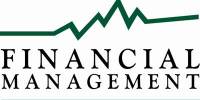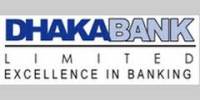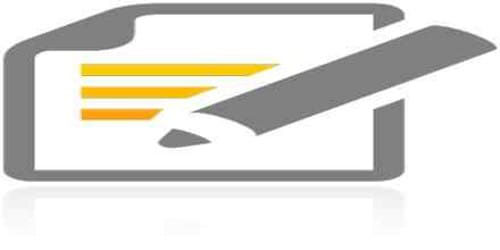History of Banking Sector of Bangladesh:
The banking system at independence consisted of two branch offices of the former State Bank of Pakistan and seventeen large commercial banks, two of which were controlled by Bangladeshi interests and three by foreigners other than West Pakistanis. There were fourteen smaller commercial banks. Virtually all banking services were concentrated in urban areas. The newly independent government immediately designated the Dhaka branch of the State Bank of Pakistan as the central bank and renamed it the Bangladesh Bank. The bank was responsible for regulating currency, controlling credit and monetary policy, and administering exchange control and the official foreign exchange reserves. The Bangladesh government initially nationalized the entire domestic banking system and proceeded to reorganize and rename the various banks. Foreign-owned banks were permitted to continue doing business in Bangladesh. The insurance business was also nationalized and became a source of potential investment funds. Cooperative credit systems and postal savings offices handled service to small individual and rural accounts. The new banking system succeeded in establishing reasonably efficient procedures for managing credit and foreign exchange. The primary function of the credit system throughout the 1970s was to finance trade and the public sector, which together absorbed 75 percent of total advances.
- The government’s encouragement during the late 1970s and early 1980s of agricultural development and private industry brought changes in lending strategies. Managed by the Bangladesh Krishi Bank, a specialized agricultural banking institution, lending to farmers and fishermen dramatically expanded. The number of rural bank branches doubled between 1977 and 1985, to more than 3,330. Denationalization and private industrial growth led the Bangladesh Bank and the World Bank to focus their lending on the emerging private manufacturing sector. Scheduled bank advances to private agriculture, as a percentage of sectored GDP, rose from 2 percent in FY 1979 to 11 percent in FY 1987, while advances to private manufacturing rose from 13 percent to 53 percent.
- The transformation of finance priorities has brought with it problems in administration. No sound project-appraisal system was in place to identify viable borrowers and projects. Lending institutions did not have adequate autonomy to choose borrowers and projects and were often instructed by the political authorities. In addition, the incentive system for the banks stressed disbursements rather than recoveries, and the accounting and debt collection systems were inadequate to deal with the problems of loan recovery. It became more common for borrowers to default on loans than to repay them; the lending system was simply disbursing grant assistance to private individuals who qualified for loans more for political than for economic reasons. The rate of recovery on agricultural loans was only 27 percent in FY 1986, and the rate on industrial loans was even worse. As a result of this poor showing, major donors applied pressure to induce the government and banks to take firmer action to strengthen internal bank management and credit discipline. As a consequence, recovery rates began to improve in 1987. The National Commission on Money, Credit, and Banking recommended broad structural changes in Bangladesh’s system of financial intermediation early in 1987, many of which were built into a three-year compensatory financing facility signed by Bangladesh with the IMF in February 1987.
- One major exception to the management problems of Bangladeshi banks was the Grameen Bank, begun as a government project in 1976 and established in 1983 as an independent bank. In the late 1980s, the bank continued to provide financial resources to the poor on reasonable terms and to generate productive self-employment without external assistance. Its customers were landless persons who took small loans for all types of economic activities, including housing. About 70 percent of the borrowers were women, who were otherwise not much represented in institutional finance. Collective rural enterprises also could borrow from the Grameen Bank for investments in tube wells, rice and oil mills, and power looms and for leasing land for joint cultivation. The average loan by the Grameen Bank in the mid-1980s was around Tk2,000 (US$65), and the maximum was just Tk18,000 (for construction of a tin-roof house). Repayment terms were 4 percent for rural housing and 8.5 percent for normal lending operations.
- The Grameen Bank extended collateral-free loans to 200,000 landless people in its first 10 years. Most of its customers had never dealt with formal lending institutions before. The most remarkable accomplishment was the phenomenal recovery rate; amid the prevailing pattern of bad debts throughout the Bangladeshi banking system, only 4 percent of Grameen Bank loans were overdue. The bank had from the outset applied a specialized system of intensive credit supervision that set it apart from others. Its success, though still on a rather small scale, provided hope that it could continue to grow and that it could be replicated or adapted to other development-related priorities. The Grameen Bank was expanding rapidly, planning to have 500 branches throughout the country by the late 1980s.
- Beginning in late 1985, the government pursued a tight monetary policy aimed at limiting the growth of domestic private credit and government borrowing from the banking system. The policy was largely successful in reducing the growth of the money supply and total domestic credit. Net credit to the government actually declined in FY 1986. The problem of credit recovery remained a threat to monetary stability, responsible for serious resource misallocation and harsh inequities. Although the government had begun effective measures to improve financial discipline, the draconian contraction of credit availability contained the risk of inadvertently discouraging new economic activity.
- Foreign exchange reserves at the end of FY 1986 were US$476 million, equivalent to slightly more than 2 months’ worth of imports. This represented a 20-percent increase of reserves over the previous year, largely the result of higher remittances by Bangladeshi workers abroad. The country also reduced imports by about 10 percent to US$2.4 billion. Because of Bangladesh’s status as a least developed country receiving concessional loans, private creditors accounted for only about 6 percent of outstanding public debt. The external public debt was US$6.4 billion, and annual debt service payments were US$467 million at the end of FY 1986.
Various Banks in Bangladesh
The commercial banking system dominates Bangladesh’s financial sector. Bangladesh Bank is the Central Bank of Bangladesh and the chief regulatory authority in the sector. The banking system is composed of four state-owned commercial banks, five specialized development banks, thirty private commercial Banks and nine foreign commercial banks. The Nobel-prize winning Grameen Bank is a specialized micro-finance institution, which revolutionized the concept of micro-credit and contributed greatly towards poverty reduction and the empowerment of women in Bangladesh. There are basically four types of Banks:-
Bangladesh Bank
Bangladesh Bank Monogram
| Headquarters | Dhaka, Bangladesh |
| Established | 16 December 1971 |
| Governor | Dr. Atiur Rahman |
| Central Bank of | Bangladesh |
| Currency | Taka |
| ISO 4217 Code | BDT |
| Reserves | 10 Billion US $ |
| Website | http://www.bangladeshbank.org.bd |
Bangladesh Bank is the Central bank of Bangladesh. It is the monetary authority of the country. It came into existence under the Bangladesh Bank Order 1972 (Presidential Order No. 127 of 1972) which took effect on 16 December 1971. Through this order, the entire operation of the former State Bank of Pakistan in the eastern wing was transferred to Bangladesh Bank.
Bangladesh Bank has 9 branch offices, two in Dhaka city (sadarghat and Motijheel), and one each in Chittagong, Khulna, Rajshahi, Sylhet, Bogra, Rangpur and Barisal. The head office discharges its duties with 28 departments.
History After the liberation war, and the eventual independence of Bangladesh, the Government of Bangladesh reorganized the Dhaka branch of the State Bank of Pakistan as the central bank of the country, and named it Bangladesh Bank. This reorganization was done pursuant to Bangladesh Bank Order, 1972, and the Bangladesh Bank came into existence with retrospective effect from 16 December 1971.
Objectives
As the central Bank of Bangladesh, the broad objectives of the Bank are :
- To regulate currency issuance and to keep foreign exchange reserves.
- To manage the monetary and credit system of Bangladesh with a view to stabilizing domestic monetary value.
- To preserve the par value of the Bangladeshi Taka.
- To promote and maintain a high level of production, employment and real income in Bangladesh; and to foster growth and development of the country’s productive resources.
- To reserve all the rights of the bank.
Functions
Bangladesh Bank performs all the functions that a central bank of any country is expected to perform, and such functions include maintaining the price stability through economic and monetary policy measures, managing the country’s foreign exchange and the gold reserve and regulating the banking sector of the country. Like all other central banks across the globe, Bangladesh Bank is both the Government’s banker and the banker’s bank, a “Lender of the Last Resort”. Bangladesh Bank, like most of the central banks of different countries, exercises monopoly over the issue of currency and the banknotes. Except for the 1 and 2 taka notes, it issues all other denominations of Bangladeshi Taka.
Bangladesh Bank is empowered to act as the watchdog of the country’s banking system, and all scheduled banks are accountable to Bangladesh Bank, which has extensive powers to ensure soundness of the banking system. No bank can commence banking business in Bangladesh and no existing bank can open a new branch in or outside the country or shift any branch from one place to another without obtaining a license/permission from the Bangladesh Bank.
Organization
The highest official in the bank is the Governor (currently Dr. Atiur Rahman). The Governor chairs the Board of Director. The Executive Staff, also headed by the Governor, are responsible for the day to day affairs.
Current Board of Directors
Chairman
- Dr. Atiur Rahman
Director
- Md. Nazrul Huda
- Dr. Wahid Uddin Mahmud
- Dr.Momtaz Uddin Ahmed
- Dr.Sufia Ahmed
- Dr. Hossain Zillur Rahman
- Dr.Mohammad Tareque
- Mr.Jafar Ahmad Chowdhury
- Mr. Muhammad Abdul Mazid
Current Executive Staff
Governor
- Dr. Atiur Rahman
Deputy Governor
- Md. Nazrul Huda
- Ziaul Hasan Siddiqui
- Md. Murshid Kuli Khan
Economic Advisor
- Habib Ullah Bahar
Executive Director
- Khandakar Muzharul Haque
- Md. Abul Quasem
- A.T.M. Nasiruddin
- Chowdhury Mohidul Haque
- Mir Abdur Rahim
- Md. Harunur Rashid Chowdhury
- Md. Mofiz Uddin Chowdhury
- Nazneen Sultana
- Md. Mofizuddin Chowdhury
- Devaki Kumar Saha
- A. H. M. Kai Khasru
Former Governors
- A.N.M. Hamidullah 1972-1974
- A.K.N. Ahmed 1974-1976
- M. Nurul Islam 1976-1987
- Shegufta Bakht Chaudhuri 1987-1992
- Khorshed Alam 1992-1996
- Lutfar Rahman Sarkar 1996-1998
- Dr. Mohammed Farashuddin 1998-2001
- Dr. Fakhruddin Ahmed 2001-2005
- Dr. Salehuddin Ahmed 2005-2009
- Dr. Atiur Rahman 2009-Present
The new governor of Bangladesh Bank will be Kamrul Hasan Zoardar.
Commercial Banks
State-owned Commercial Banks
The banking system of Bangladesh is dominated by the 4 Nationalized Commercial Banks, which together controlled more than 54% of deposits and operated 3388 branches (54% of the total) as of December 31, 2004 The nationalized commercial banks are:
- Sonali Bank
- Janata Bank
- Agrani Bank
- Rupali Bank
Private Commercial Banks
Private Banks are the highest growth sector due to the dismal performances of government banks (above). They tend to offer better service and products.
- AB Bank Ltd
- BRAC Bank Limited
- Eastern Bank Limited
- Dutch Bangla Bank Limited
- Dhaka Bank Limited
- Islami Bank Bangladesh Ltd
- Pubali Bank Limited
- Uttara Bank Limited
- IFIC Bank Limited
- National Bank Limited
- The City Bank Limited
- United Commercial Bank Limited
- NCC Bank Limited
- Prime Bank Limited
- SouthEast Bank Limited
- Al-Arafah Islami Bank Limited
- Social Islami Bank Limited
- Standard Bank Limited
- One Bank Limited
- Exim Bank Limited
- Mercantile Bank Limited
- Bangladesh Commerce Bank Limited
- Mutual Trust Bank Limited
- First Security Islami Bank Limited
- The Premier Bank Limited
- Bank Asia Limited
- Trust Bank Limited
- Shahjalal Islami Bank Limited
- Jamuna Bank Limited
- ICB Islami Bank
- Moon Bank Limited
- United Bank Limited
Foreign Commercial Banks
- Citibank
- HSBC
- Standard Chartered Bank
- Commercial Bank of Ceylon
- State Bank of India
- Habib Bank
- National Bank of Pakistan
- Wori Bank
- Bank Alfalah
Specialized Banks and Credit Agencies
Out of the specialized banks, two (Bangladesh Krishi Bank and Rajshahi Krishi Unnayan Bank) were created to meet the credit needs of the agricultural sector while the other two ( Bangladesh Shilpa Bank (BSB) & Bangladesh Shilpa Rin Sangtha (BSRS) are for extending term loans to the industrial sector. The Specialized banks are:
- Grameen Bank
- Bangladesh Krishi Bank
- Bangladesh Development Bank Ltd
- Rajshahi Krishi Unnayan Bank
- Basic Bank Ltd (Bank of Small Industries and Commerce)
- Ansar VDP Unnyan Bank
Various Schemes and Banking Products of Formal Banking Product & Services:
Deposit Products:
1. Current A/C
2. Savings Bank Deposit A/C
3. Short Term Deposit A/C
4. Term Deposit A/C
5. Premium Term Deposit A/C
6. Instant Earnings Term Deposit A/C
7. Special Savings Scheme
8. Special Fixed Deposit Scheme
9. NFCD
10. RFCD
11. Money Double Program
Loans and Advance Products
- Working Capital Financing
- Commercial and Trade Financing
- Long Term (Capital) Financing
- HouseBuilding Financing
- Retail and Consumer Financing
- SME Financing
- Agricultural Financing
- Import and Export Financing
Cards
- ATM Card
- Credit Card (Local, International and Dual)
Remittance Products
- Special Interest rate on Savings and Term Deposits
- Wage Earners Welfare Deposit Pension Scheme
- Loans for Real Estate (Land purchase and House construction/renovation)
- Advance against Regular Remittance
Services
Brokerage House
- Member, Dhaka Stock Exchange Ltd.
- Full Service Depository Participant
Treasury Service
- Primary Dealer of Govt. Approved Securities
Remittance Service
- Correspondence arrangement with more than 330 Financial Institutions all over the World
- For Wage Earners Remittance we have Agency arrangement with 12 reputed Exchange Houses covering major Locations of our Expatriate
Categories of Overall Banking Activities:
Banks activities can be divided into three categories. These are as follows:-
- General Banking Activities
- Credit or loan activities
- Foreign exchange activities
What is General banking Activities?
General Banking (GB): It is the starting point of all the banking operation. It does the most important and basic works of the bank. It also plays a vital role in deposit mobilization. A bank starts its operation providing services to the customers by its general banking activities. The efficiency of general banking activity that provided by each bank reflects the whole service given by that bank. With the increasing competition customers are mostly impressed by the efficiency of this department. The whole general banking activity is consisted of receiving deposit, remitting fund, and meeting the demand of customers.
General Banking Section:
- To maintain different types of deposit account
- Local Remittance
- To operate clearing house activities
- To maintains safety deposit lockers
- Cash Section
- Capital Market operation
- Online Banking
- ATM and Credit Card Services
Account Opening Section:
The relationship between banker and customer begins with the opening of an account by the customer. Opening of an account binds the customer into a contractual relationship under a legal framework of the “Contract Act -1872”. But selection of a customer for opening an account is very crucial for a bank. So Banks takes the highest caution in this regard.
Banks opens the following accounts for its customers
Current Account:
A current deposit account may be operated in several times during a working day. There is no restriction on the number and the amount of withdraws from a current account and the banker does not allow any interest on the current account. There are two facilities for the people who open a current account. They are:-
- Over draft facility
- Collection of check transfer of money rendering agency, general utility service.
A person can open a current a/c or any entity. The entity can be a partnership firm, limited company, proprietorship firm, association, clubs etc. For opening a current account of the above, the requirements and steps, which are followed by this branch, are like: –
For a person:
There is an individual application form for opening personal current a/c. The person, who wants to open this type of a/c, is said to fulfill the following requirement:
a) Name/ Father’s Name/ Husband’s Name:
b) Present and Permanent Address:
c) Occupation:
d) Mandate in Writing:
e) Declaration of Nominee:
f) Letter of Introduction:
g) Specimen Signature:
h) Passport Size Photograph:
i) Initial deposit.
For Join Stock Companies, Association, Clubs etc:
In case of opening a current a/c of join stock companies, association, clubs etc. the following requirements are said to fulfill:
a) True copies of certificate of incorporation or registration (in case of companies and registered bodies).
b) True copies of certificate of commencement of business (in case of limited company).
c) True copies of memorandum and articles of association (in case of limited company). The rules of regulation by laws (in case of associations, clubs etc.)
d) True copy of resolution of the Board of Directors of Managing committee / Governing Body, regarding conduct of account.
e) Certificate list containing names and signature of the Board of Directors/ Officer Bearers.
For Partnership / Proprietorship Company:
To open a current a/c on the name of any partnership or proprietorship company, the following document are required:
a) Filled up application form stating about the name and address of the firm.
b) Partnership deed.
c) Trade License.
d) Two copies of photographs.
e) Endorsement of an a/c holder of the same branch. (for partnership companies).
f) Undertaking / declaration about the partnership is taken by the bank in a white paper (for proprietorship firm)
For Private & Public Limited Company:
The document are required by the bank to open a current a/c be:
a) Copy of the certificate of incorporation or registration.
b) Copy of the certificate of business.
c) True copy of memorandum of association and articles of association abide by laws.
d) True copy of resolution of the Board of Directors / Managing Committee /Governing Body regarding conduct of the account.
In order to open an account, the customer is first of all asked to fill up the application form given from the bank. The bank requires few documents of the client due to the producers, such as proposal for opening an a/c, name and full address (both present and permanent).
Savings Account:
- A saving a/c is meant for the person of the lower and middle classes who wishes to save a part of their income to meet their future needs and intend to earn an income from their saving.
- All the feature are like CD a/c except some restrictions imposed by the bank.
- The bank offers a reasonable rate of interest.
- The number of withdrawals over period of times is limited. Only two withdrawals are permitted per week. But more than that no interest will be paid on rest of the amount for that month.
- The total amount of one or more withdrawals on any date should not exceed 25% of the balance in the a/c unless 7 days advance notice is given.
Short-term Deposit Account:
Entries Passed
A deposit slip shall be prepared crediting the STD a/c with the amount of the deposit.
Cash————-Dr.
STD a/c (Party)———Cr.
If the amount shall be deposited by check or transfer of a/c, the following entries shall be passed—
Party C/D, S/D a/c———-Dr.
STD a/c——————————–Cr.
The a/c opening form shall be pasted in the passing file in numerical order. The credit voucher shall be passed in the STD a/c of the party. In case of letter of authority to debit the STD a/c of the customer, voucher will be prepared and the following entries shall be passed:-
STD a/c (Party)—————Dr.
C/D (Party)————————Cr.
Minimum 7 days notice period is required for withdrawal of any sum of money from STD a/c. Banker is not legally liable to the customer, if the check is dishonored under the following conditions, although the check is properly drawn:
- If the fund is insufficient.
- If the payment is stopped by the drawer.
- If payment is stopped by the court by issuing garnishee order.
- Any competent authority issues Attached order.
- Check is presented after the death of the customer.
- Notice of assignment.
- Check presented after the business/banking hour as declared earlier.
Letter of Introduction
This is a letter of certification, from a person, who is a valid customer of that particular branch and maintaining any kind of a/c. usually a customer from other branch is not allowed to be the introducer, but it is permitted. The process of introducing a new client can be done on the form itself. There is a space in the application where the introducer will write his/her a/c no. and sign his/her specimen signature. It always advisable on the part of the banker to allow the prospective customer to open an a/c only with a proper introduction from a responsible person, known to both the parties.
A letter of introduction always protects a banker in the following ways
- Protection against fraud
- Protection against invariant overdraft
- Protection against undiscouraged bankrupt
- Protection against negligence under sec. 131 of NI Act
- Protection against giving incorrect information follow the banker
Declaration of Nominee
The person who wants to open an a/c can mention one or two nominee. The application will give a declaration in the space given on the a/c opening form, stating the name and father’s name, age address, relation and percentage of share (if more than one). The a/c holder can change the nominee any time and it will be valid, only after the of the a/c holder.
Specimen Signature
The applicant will sign on the application and he will be provided with an extra paper where he will sign three or more signatures, which he has to maintain all through the duration of the account.
Interview
At the time of the opening of a new a/c, this concerned branched always takes an interview with prospective customer so as to obviate the chances of preparation of any fraud at the letter stage.
Initial Deposit
It is always a common practice among the bankers to allow a new customer to open an a/c only in cash.
Operation Instruction
If any party wants his/her a/c to be operated by some body else, s/he will provide the banker in writing statement about the operator.
Verification of Document
The banker should verify some of the important documents, like the Memorandum of Association, Article Association by laws Copy etc. In verification of certain other documents like, trust Deed Probate, Letter of Administration etc. may be needed. Conversant with the provision of special acts, since a banker is to deal with different classes of customers, s/he has to be thoroughly conversant with certain laws.
Pay in Slip, Check Book and Pass Book
The customer is supplied with a pay in slip book to use for depositing cash or check of bill into a/c. The customer is also supplied with a checkbook for drawing money as and when the customer wishes, which normally contains 10 to 50 bank forms. If the customer does not like to have a checkbook, then s/he can make use of withdrawal form for withdrawing money. But there is no use of such kind of form in this branch. In addition to the above, a customer is given a passbook, which reflects the customer’s a/c in the banker’s ledger. It usually contains the rules and regulations of the bank and terms and conditions of deposits.
Fixed Deposit Account:
A fixed deposit a/c is repayable after the expiry of a predetermined period fixed by the customer himself. The period varies from three months to five years. The customer may open his/her a/c for different time periods, which may be for three months, six months, one year, two years, three years, four years, five years.
Though FDR is an a/c, it is something different from other a/c. FDR is a long-term deposit. Usually customers are allowed to open this a/c for a certain period. The rate of interest varies in accordance with the terms of deposit.
The amount of FDR is payable once at a time. After the term for which the a/c was opened, the FDR gets its maturity. Paying the principle amount plus interest less income tax then fulfills the claim.
Monthly Savings Deposit Account:
It is a new project, which is a scheme like DPS. The installment payment is to be made to the bank within the first 10 days of each month. It can be opened for 5years and 10 years maturity for Tk. 500 and 10000.
Special Fixed Deposit Scheme:
- Any amount of TK. 1,00,000/= or multiple may be deposited under this scheme.
- Duration of the scheme is 3 (Three) years.
- Monthly interest will be given to the depositor against the deposited amount.
- Like ‘Deposit Pension Scheme’ this scheme includes the following features for the convenience of clients.
- The monthly installments of TK. 500.00 to 2,500.00 may be deposited every month during the entire period of scheme.
- The duration of the scheme is 5 years or 10 years.
Local Remittance:
Cash handling from one place to another is risky. So, bank remits funds on behalf of the customers to save them from any mishaps through the network of their branches. There are four modes of remitting money from one place to another. These are –
- Pay order (PO)
- Demand Draft (DD)
- Telegraphic Transfer (TT)
- Mail Transfer (MT)
Clearing Activities:
Outward Bill for Collection:
The instrument of the Bank includes checks; pay order, demand draft etc. The Bank collects its own instrument from other banks through Clearing House as the clients with no charges or commissions required to perform this service submit them in different locations.
Inward Bill for Collection:
The Bank provides the instruments to other banks through Clearing House, which have been collected from different clients. It performs this kind of service for its clients without requiring any charges or commission.
Locker Service:
Locker services are available for the clients in exchange of fees. In this context the client gets a locker in Bank with a key and the permission to keep goods or documents with the consent of the Bank.
Online Banking:
Coputerization of the Branches and Head Office as well is underway with a view to providing guality and prompt service to the customers. Now the Bank starts, On Line Banking.
ATM Service & Credit Card:
The Bank to extend modern banking faciliy to the customers allowing 24 hrs accesses to any ATM dispenser situated . The network will be expanded phase by phase in other parts of the country. Recently they also established alots of ATM BOOTH as well.
Types of loans granted by commercial banks:
1. Secured loan
A secured loan is a loan in which the borrower pledges some asset (e.g., a car or property) as collateral (i.e., security) for the loan.
2. Mortgage loan
A mortgage loan is a very common type of debt instrument, used to purchase real estate. Under this arrangement, the money is used to purchase the property. Commercial banks, however, are given security – a lien on the title to the house – until the mortgage is paid off in full. If the borrower defaults on the loan, the bank would have the legal right to repossess the house and sell it, to recover sums owing to it.
In the past, commercial banks have not been greatly interested in real estate loans and have placed only a relatively small percentage of their assets in mortgages. As their name implies, such financial institutions secured their earning primarily from commercial and consumer loans and left the major task of home financing to others. However, due to changes in banking laws and policies, commercial banks are increasingly active in home financing.
Changes in banking laws now allow commercial banks to make home mortgage loans on a more liberal basis than ever before. In acquiring mortgages on real estate, these institutions follow two main practices. First, some of the banks maintain active and well-organized departments whose primary function is to compete actively for real estate loans. In areas lacking specialized real estate financial institutions, these banks become the source for residential and farm mortgage loans. Second, the banks acquire mortgages by simply purchasing them from mortgage bankers or dealers.
In addition, dealer service companies, which were originally used to obtain car loans for permanent lenders such as commercial banks, wanted to broaden their activity beyond their local area. In recent years, however, such companies have concentrated on acquiring mobile home loans in volume for both commercial banks and savings and loan associations. Service companies obtain these loans from retail dealers, usually on a no recourse basis. Almost all bank/service company agreements contain a credit insurance policy that protects the lender if the consumer defaults.
3. Unsecured loan
Unsecured loans are monetary loans that are not secured against the borrowers assets (i.e., no collateral is involved). These may be available from financial institutions under many different guises or marketing packages:
- Bank Overdrafts
- Corporate Bonds
- Credit card Debt
- Credit Facilities or Lines of Credit
- Personal loans
More parts of this post-
SME Banking Scope In Bangladesh.(Part-1)
SME Banking Scope In Bangladesh.(Part-2)
SME Banking Scope In Bangladesh (Part-3)
SME Banking Scope In Bangladesh (Part-4)
SME Banking Scope In Bangladesh (Part-5)
SME Banking Scope In Bangladesh (Part-6)
SME Banking Scope In Bangladesh (Part-7)
SME Banking Scope In Bangladesh (Part-8)
SME Banking Scope In Bangladesh (Part-9)
















